Not All Chemists Are White Men
Academics / Departments & Programs / Chemistry & Biochemistry / Not All Chemists Are White men

In most chemistry classes, students are only taught about white male chemists (like Dalton, Thompson, Rutherford, and Bohr). While it is important to learn about these men and their work, by exclusively talking about them, it can give the impression that it is only white men who have made significant contributions to chemistry. There are, however, many people of color and women that have made great innovations in chemistry and other related fields. The following scientists are all people of color and women who have done significant research in the field of chemistry.
For chemists indicated by a (*), we created an application problem connecting their work to a general chemistry topic which is compiled in a PowerPoint, available here: Powerpoint.
Ivan Addae-Mensah* 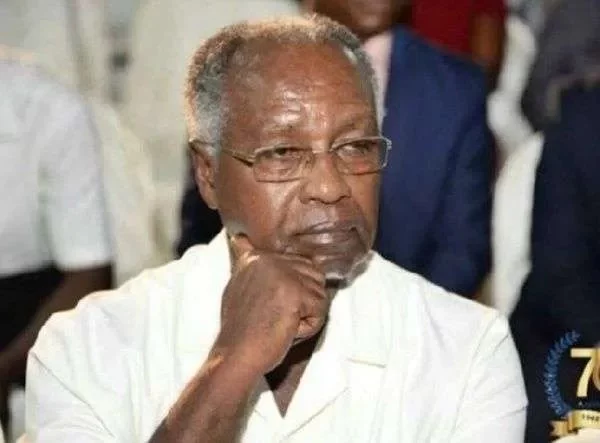
- Born in 1942.
- Masters from the University of Ghana, Legon and PhD from the University of Cambridge.
- Former Vice Chancellor of the University of Ghana.
- Awarded honorary doctorate degrees from the University of Ghana, New York University, and Soka University (Japan).
- Works with World Health Organization (WHO); was a member of the Expert Advisory Committee of the malaria drug development initiation.
- Developed inexpensive methodology (semi-quantitative thin layer chromatography) to detect counterfeit malaria drugs using intermolecular forces.
Try this: One common antimalarial drug is mefloquine (pictured to the right). Label all areas of mefloquine that may contribute to intermolecular forces (H-bonding or polarity).
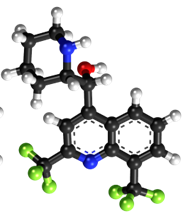
Sources
“Free SHS: Ghana Will Pay a Price in Future – Addae Mensah.” The Independent Ghana, 10 June 2020, https://theindependentghana.com/2020/06/free-shs- ghana-will -pay-a-price-in-future-addae-mensah/. “Ivan Addae Mensah.” Wikipedia, Wikimedia Foundation, 24 May 2020, en.wikipedia.org/wiki/Ivan_Addae_Mensah. Osei-Safo, Dorcas, et al. “Further Validation of a Rapid Screening Semiquantitative Thin-Layer Chromatographic Method for Marketed Antimalarial Medicines for Adoption in Malawi.” Journal of Analytical Methods in Chemistry, vol. 2018, 2018, doi:10.1155/2018/2130390.
Mian Chin 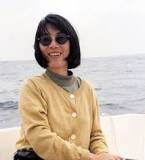
- Born in Shanghai, China.
- Continued her education with other children in the educated youth program during the Chinese Cultural Revolution.
- Earned Bachelors from East China Normal University, Masters from Ball State University, and PhD from Georgia Tech.
- Published over 350 articles.
- Received the NASA Exceptional Achievement Medal in 2005.
- Studies the area of aerosol/cloud chemistry, where the liquid water in the clouds manipulate the orientation of the gas molecules based on hydrophilicity of the gas and hydrogen bonding interactions. This orientation hinders or encourages different reactions.
Sources
““Bio - Mian Chin.” Edited by Karen Smale, Sciences and Exploration Directorate, NASA, 2020, science.gsfc.nasa.gov/sed/bio/mian.chin-1. “Dr. Mian Chin.” NASA, https://acd-ext.gsfc.nasa.gov/People/Chin/. “Mian Chin.” Wikipedia, Wikimedia Foundation, 20 June 2020, en.wikipedia.org/wiki/Mian_Chin.
Uma Chowdhry* 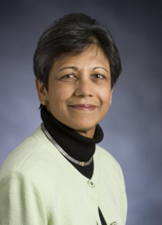
- Born in 1947 in Bombay (now Mumbai), India.
- BS from the University of Bombay, Masters from California Institute of Technology, PhD in Material Science from MIT.
- Developed ceramics (traditionally insulators) that can conduct electricity with zero resistance at low temperatures, called superconductors.
- These ceramic superconductors are now used in sustainable batteries, biofuel, and electronic packaging.
- Worked at Dupont, a leading scientific research and manufacturing company, filling roles related to the chemistry, management, and business side of the company over her 33 years, becoming Dupont’s chief science and technology officer.
Try this: Bi₂Sr₃₋ₓCaₓCu₂O₈₊ᵧ has zero resistivity at 91K. What is this temperature in degrees Celsius and Fahrenheit?
Sources
Cary, N.C. “LORD Corporation Names Uma Chowdhry to Board of Directors.” PR Newswire, 2 Aug. 2010, www.prnewswire.com/news-releases/lord-corporation-names-uma-chowdhry -to-board-of-directors-99754499.html. “Uma Chowdhry.” Science History Institute, 4 Dec. 2017, www.sciencehistory.org/historical-profile/uma-chowdhry.
Marie Curie 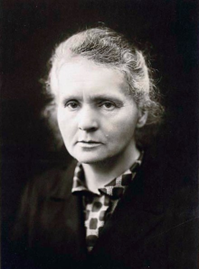
- Born in 1867 in Warsaw, Poland.
- Paid her sister’s way through medical school by working as a governess for 5 years, then was helped by her sister while attending school herself.
- Originally studied at the underground Flying University in Poland, earned two degrees from the University of Paris.
- Shared the 1903 Nobel Prize with her husband for the discovery of the element radium in uranium ore after being originally overlooked by the awarding committee.
- After her husband’s death, she became the first scientist to isolate pure radium metal in 1910, for which she won her second Nobel Prize in 1911.
- Her two Nobel Prizes made her the first woman to win and the first person and only woman to win twice.
- Founded the Curie Institutes in Paris and Warsaw as a state of the heart research facility focusing on radioactivity and cancer.
- Developed portable x-ray machines for use in the field during World War I.
Try this: Write the short-hand notation for the electron configuration of Ra.
Sources
“Marie Curie Biographical.” NobelPrize.org, Nobel Foundation, 1967, www.nobelprize.org/prizes/physics/1903/marie-curie/biographical/. “Marie Curie.” Biography.com, A&E Networks Television, 24 Feb. 2020, www.biography.com/scientist/marie-curie. Manuel, Henri. Marie Curie, Wikipedia, 1920, https://en.wikipedia.org/wiki/Marie_Curie. “Marie Curie.” Wikipedia, Wikimedia Foundation, 15 July 2020, en.wikipedia.org/wiki/Marie_Curie.
Luis Echegoyen*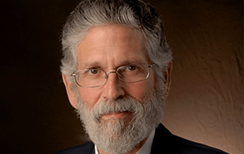
- Born in 1951 in Habana, Cuba.
- Graduated with a BS and PhD in Chemistry from the University of Puerto Rico in 6 years total.
- Director of the Chemistry Division at the National Science Foundation from 2006 to 2010.
- President of ACS in 2020.
- Teaches chemistry at the University of Texas El Paso and Clemson University and previously taught at the University of Puerto Rico, University of Maryland, and University of Miami.
- Published 385 articles and 47 book chapters.
- Develops new forms of pure carbon molecules (allotropes), C>₆₀, such as carbon nanotubes and "carbon maracas."
Try this: Which of the following pairs are allotropes?
- A. H₂O (l) and H₂O (g)
- B. S₈ (s) and S (s)
- C. CO₂ (g) and CO (g)
- D. CH₄ (g) and CF₄ (g)
- E. Na (s) and Na⁺ (aq)
Sources
Echegoyen, Luis. “Profile of Luis Echegoyen, PhD.” SACNAS, www.sacnas.org/team/luis-echegoyen-phd/. “Profile of Dr. Luis Echegoyen.” University of Texas El Paso College of Science, www.utep.edu /science/echegoyen/Group%20members/Dr.%20Luis%20%20Echegoyen.html. “Profile of Luis Echegoyen.” SACNAS, www.sacnas.org/team/luis-echegoyen-phd/.
Frank A. Gomez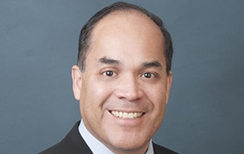
- Born in Montebello, California into a Mexican American family.
- PhD at UCLA and postdoc at Harvard University.
- Teaches chemistry at California State University, Los Angeles where he is also the university Faculty Research Liaison.
- Published over 130 articles and two books.
- Mentored over 142 high school, undergrad, masters, and postdoctoral students.
- Studies biological molecules and how they react when shocked with electronic voltage in a small glass capillary.
- Researches in the field of point-of-care (POC) diagnostic devices, which allow medical professionals to quickly run tests and get results without sending specimens to a lab.
Sources
Gomez, Frank A. “Profile of Frank A. Gomez, PhD.” SACNAS, www.sacnas.org/team/frank-a-gomez-phd/. “The Research Lab of Dr. Frank A. Gomez.” Cal State LA, 25 June 2020, www.calstatela.edu/research/gomez.
Alma Levant Hayden*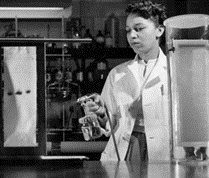
- Born in 1927 in Greenville, South Carolina.
- Masters from Howard University.
- First black scientist to work at the Food and Drug Administration.
- Debunked a "miracle cure" for cancer by using infrared spectroscopy to show that the drug was simply creatine (a common amino acid found in meats).
- Research focused on using spectroscopy to identify precursors to steroids.
- Died of cancer at the age of 40 in 1967.
Try this: What is the frequency of light at peak absorbance (wavenumber = 2950 cm⁻¹) for creatine? Given:
- wavenumber = 1/wavelength
- c = 3.0x10⁹ cm/s
Sources
“Alma Hayden Spraying Chromatogram with Reagent.” Alma Lavant Hayden, Wikipedia, en.wikipedia.org/wiki/Alma_Levant_Hayden. “From the Annals of NIH History: Hidden Figures in Paper Chromatography.” National Institutes of Health Intramural Research Program, U.S. Department of Health and Human Services, 10 Sept. 2019, irp.nih.gov/catalyst/v25i2/from-the-annals-of-nih-history. Kelly, John. “The Doctor Said It Could Cure Cancer. The Federal Chemist Proved That It Couldn't.” The Washington Post, WP Company, 26 Aug. 2017, www.washingtonpost.com/local/the-doctor-said-it-could-cure-cancer-the-federal-chemist-proved-that-it-couldnt/2017/08/26/62e72986-88d0-11e7-a94f-3139abce39f5_story.html?noredirect=on.
Henry Aaron Hill*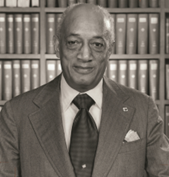
- Born in 1915 in St. Joseph, Missouri.
- PhD from Massachusetts Institute of Technology.
- Appointed to the National Commission on Product Safety in 1968 by President Lyndon B. Johnson.
- Served on the national council and board of directors for the American Chemical Society and later became the first African American president of ACS in 1976.
- Developed "blowing agents" which produce the tiny bubbles of gas that expand plastics (e.g. foam like in a yoga mat).
- Patented a synthesis of azodicarbonamide which was cheaper to make than the traditional synthesis and required a lower decomposition temperature.
- At 200°C, azodicarbonamide (C2H4N4O2) in water decomposes into gases (such as nitrogen, carbon monoxide, carbon dioxide, and ammonia) which act as blowing agents: C₂H₄N₄O₂ + H₂O → N₂(g) + 2NH₃(g) + CO(g) + CO₂(g).
Try this: If you start with 25.0 grams of azodicarbonamide and excess water, what will be the resulting volume (in liters) of gas formed at 200°C and 3.0 atm?
Sources
American Chemical Society. “Henry Aaron Hill.” Science History Institute, https://www.sciencehistory.org/historical-profile/henry-aaron-hill. Hill, Henry A. Azodicarboxamide for use as a blowing agent in cellular-rubber manufacture. US 2988545. National Polychemicals, Inc. 13 June 1961. Manning, Kenneth R. “Hill, Henry Aaron (1915-1979), Chemist and Businessman.” American National Biography Online, 2000, doi:10.1093/anb/9780198606697.article.1301905. Stehr, J. “Chemical Blowing Agents in the Rubber Industry. Past – Present – and Future?” International Polymer Science and Technology, vol. 43, no. 5, 2016, pp. 1–10., doi:10.1177/0307174x1604300501.
Mary Elliot Hill*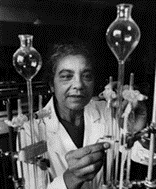
- Born in 1907 in South Mills, North Carolina.
- Masters in chemistry from the University of Pennsylvania.
- Taught chemistry at Virginia State College Laboratory School, Hampton Institute, Bennett College, Tennessee A & I College (now Tennessee State University), and Kentucky State College where she established chapters of the American Chemical Society.
- Developed a method of monitoring reaction progress through examination of solubility of reaction products.
- Won awards for teaching chemistry in both high schools and colleges, designated as one of the top six chemistry educators in the US and Canada by the Manufacturing Chemists Association.
Try this: Which concentration(s) could be measured to monitor reaction progress, based on your knowledge of solubility: CaSO4 + K₂CO₃ → CaCO₃ + K₂SO₄
- [Ca2+]
- [CO32-]
- [K+]
- [SO42-]
- Both a and b
- Both b and d
Sources
“Photo of Mary Elliott Hill.” Wikipedia, https://en.wikipedia.org/wiki/Mary_Elliott_Hill. Scott, Billy. “Hill, Mary Elliott.” African American Studies Center, 2013, doi:10.1093/acref/9780195301731.013.34456.
Percy Lavon Julian* 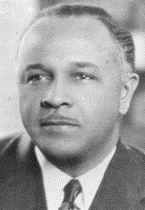
- Born in 1899 in Montgomery, Alabama into a working black family.
- Masters from Harvard University and PhD from the University of Vienna.
- Taught chemistry at Fisk University, West Virginia State College, Howard University, and DePauw University.
- Synthesized medicinal hormones from soybean oil used to prevent miscarriages and treat breast cancer and arthritis.
- Published in more than 50 scholarly journals and held 94 patents for producing proteins, sterols, and steroids.
- As a young professor, he famously won a dispute with an established Oxford University chemist over the synthesis of the molecule eserethole.
Try this: For the eserethole molecule to the right: label carbons (gray atoms) with hybridizations & count sigma and pi bonds.
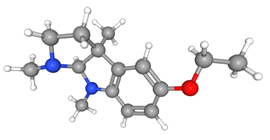
Sources
Carey, Charles W. “Julian, Percy Lavon (1899-1975), Chemist.” American National Biography Online, 2000, doi:10.1093/anb/9780198606697.article.1301911. Chamberlain, Gaius. “Percy Julian.” The Black Inventor Online Museum, Adscape International, LLC, 22 Nov. 2019, https://www.blackinventor.com/percy-julian/.
Yuan T. Lee*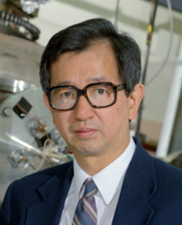
- Born in 1936 in present-day Hsinchu, Taiwan.
- Masters at National Tsing Hua University and PhD at UC Berkeley.
- Taught at the University of Chicago and UC Berkeley.
- Using high-energy molecular beams, characterized in great detail reactions between unusual species such as ionic radicals.
- Won the Nobel Prize for Chemistry and the National Medal of Science in 1986.
- Served as President of Academia Sinica, the most prominent research institution in Taiwan from 1994-2006 and as President of the International Council for Science from 2011-2014.
Try this: Attempt to draw a Lewis Dot structure for N₂⁺ + H₂ → N₂H⁺ + H
Sources
“Photo of Yuan T. Lee from the Nobel Foundation Archive.” Yuan T. Lee - Biographical, Nobel Foundation, www.nobelprize.org/prizes/chemistry/1986/lee/biographical/. “Yuan T. Lee Biographical.” Edited by Wilhelm Odelberg, NobelPrize.org, Nobel Foundation, 2018, www.nobelprize.org/prizes/chemistry/1986/lee/lecture/. “Yuan T. Lee.” Wikipedia, Wikimedia Foundation, 28 June 2020, en.wikipedia.org/wiki/Yuan_T._Lee.
Samuel P. Massie*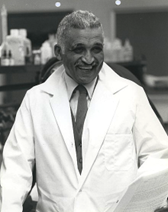
- Born in 1919 in Little Rock, Arkansas.
- PhD from Iowa State University.
- Was denied on-campus residence and access to the same labs as the white students while studying for his PhD.
- Awarded an honorary doctorate later in his career from the University of Arkansas, the same university that had denied his undergrad application due to his race.
- Developed liquid uranium compounds for the enrichment of 235U in uranium samples for use in atomic bombs during World War II.
- Worked on the Manhattan Project, which created the first atomic bomb, from 1943 - 1945, developing scars on his back from radiation exposure.
- Served as the first African American professor at the United States Naval Academy from 1966 - 1993, later becoming the first African American honorary member of the National Naval Officers Association.
Try this: How many protons are in ²³⁵U?
Sources
Lester, Paul. “Black History Month: 5 Facts About Dr. Samuel P. Massie.” Energy.gov, Department of Energy, 14 Feb. 2019, www.energy.gov/articles/black-history-month-5-facts-about-dr-samuel-p-massie. “Samuel P. Massie.” Wikipedia, Wikimedia Foundation, 20 June 2020, en.wikipedia.org/wiki/Samuel_P._Massie. “Samuel P. Massie in a Lab.” Samuel P. Massie, Wikipedia, https://en.wikipedia.org/wiki/Samuel_P._Massie. Satyanarayana, Megha. “9 Black Chemists You Should Know About.” Chemical and Engineering News, American Chemical Society, 21 Feb. 2020, cen.acs.org/people/profiles/Six-black-chemists-should-know/97/web/2019/02.
Maud Menten*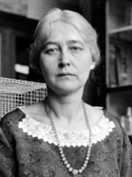
- Born in 1879, Port Lambton, Canada.
- PhD in biochemistry, University of Chicago.
- Retired as Professor of pathology at the University of Pittsburgh in 1949.
- Worked on the development of enzyme kinetics, including the Michaelis-Menten equation in 1913.
- Proposed a general theory of enzyme action based on these kinetic observations (Kotz p642).
Try this: Given the Michaelis-Menten mechanism, what is the steady state approximation: E + S ↔ ES, ES → P
- d[ES]/dt = 0
- d[E]/dt = d[S]dt
- d[P]/dt = 0
- [P] = a constant
- Both a and b
- Both b and d
Sources
Leonor Michaelis and Maud Leonora Menten https://www.sciencehistory.org/historical-profile/leonor-michaelis-and-maud-leonora-menten (accessed Jun 3, 2021). "Profile of Menten", linfl, https://litfl.com/maud-menten/ Kotz, John C., et al. Chemistry & Chemical Reactivity. 10th edition, Cengage Learning, 2018.
Jesus Moralez
- Born in San Pedro, California into a Mexican American family.
- PhD from Purdue University.
- Helped develop plastics that can withstand high temperatures such as those used in jet engines and power plants.
- These more durable and sustainable plastics have a large impact on energy consumption around the world.
Sources
Moralez, Jesus. “Profile of Jesus Moralez, PhD.” SACNAS, www.sacnas.org/team/jesus-moralez-phd/. “Profile of Jesus Moralez, PhD.” SACNAS, www.sacnas.org/team/jesus-moralez-phd/.
Vincent K. Nartey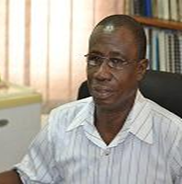
- PhD from Graz University of Technology in Austria.
- Professor at the University of Ghana Legon.
- Studies the groundwater in rural Ghana, analyzing sources of contaminants and health impacts of the water on local communities.
Sources
Fianko, Joseph Richmond, et al. “The Hydrochemistry of Groundwater in Rural Communities within the Tema District, Ghana.” Environmental Monitoring and Assessment, vol. 168, no. 1-4, 11 Aug. 2009, pp. 441–449., doi:10.1007/s10661-009-1125-0. “Profile Vincent K. Nartey.” University of Ghana, http://www.ug.edu.gh/chemistry/faculty-staff?page=1
Donna Nelson* 
- Born in 1954 in Eufaula, Oklahoma into a Creek Nation community.
- PhD from the University of Texas.
- Professor at the University of Oklahoma.
- Served as President of the American Chemical Society in 2016.
- Worked with the creators of "Breaking Bad" as a science advisor to improve the representation of science and scientists to the public and even co-wrote a book titled "The Science of Breaking Bad."
- Added ionic functional groups to carbon-nanotubes (pictured below) to connect tubes to each other ionically and increase stability at high temperatures.
- Resulting nanotechnology can be used for high temperature conductive coatings.
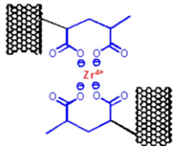
Try this: Based on intermolecular forces, sort these molecules by melting point, highest to lowest.
- Methane (CH4)
- Water (H2O)
- Barium fluoride (BaF2)
- Carbon monoxide (CO)
Sources
“Donna Nelson.” Wikipedia, Wikimedia Foundation, 22 May 2020, en.wikipedia.org/wiki/Donna_Nelson. Hicks, Jesse. “Bad Chemistry.” Distillations, Science History Institute, 12 Apr. 2017, www.sciencehistory.org/distillations/article/bad-chemistry. Jaisankar, S. N., Nelson, D. J., Kumar, R., & Mandal, A. B. (2014). Ionomer covalent functionalization of single-walled carbon nanotubes by radical polymerization of zirconium acrylate. AIChE Journal, 60(3), 820–828. https://doi-org.lib-proxy.calvin.edu/10.1002/aic.14336 McNeese, David. “Dr. Donna J. Nelson.” Donna Nelson, Wikipedia, 2013, https://en.wikipedia.org/wiki/Donna_Nelson. Nelson, Donna. “Profile of Donna Nelson, PhD.” SACNAS, www.sacnas.org/team/donna-nelson-phd/.
Charles John Pederson* 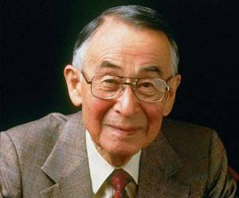
- Born in 1904 in Busan, Korea to a Norwegian father and Japanese mother; moved to Japan for preparatory school.
- Masters in Organic Chemistry from Massachusetts Institute of Technology.
- Published 25 papers and received 65 patents.
- Early work used "deactivators" to reduce metal ions that would otherwise catalyze unwanted oxidation of petroleum products.
- While working to deactivate vanadium ions, stumbled upon the synthesis of the first crown ethers.
- Won the Nobel Prize in 1987 for this work, making him one of the few winners without a PhD and one of two Korean-born winners.
Try this: What is the oxidation number of carbon before and after the unwanted oxidation of methane to methanol?

Sources
“Charles J Pederson.” Charles J Pederson Biography, The Famous People, www.thefamouspeople.com/profiles/charles-j-pedersen-7600.php. “Charles J. Pedersen.” Wikipedia, Wikimedia Foundation, 18 July 2020, en.wikipedia.org/wiki/Charles_J._Pedersen. Smith, John Kenly. “Pedersen, Charles John (1904-1989), Chemist.” American National Biography Online, Feb. 2000, doi:10.1093/anb/9780198606697.article.1302151.
Sir Chandrasekhara Venkata Raman 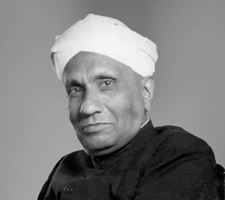
- Born in 1888 in Trichinopoly, Madras (now known as Trichy, Tamil Nadu), India.
- BA and Masters from Presidency College (now part of the University of Madras).
- Published his first paper on the diffraction of light in 1906 at the age of 18, with no other contributors listed.
- Worked in the governmental finance department for 10 years after receiving his masters, while still conducting experiments at the Indian Association for the Cultivation of Science, writing 30 articles during this time.
- Joined Calcutta University as the first Palit Professor of Physics in 1917.
- Discovered, with his assistant K.S. Krishnan, that some light changes wavelength and amplitude after passing through a transparent material, known as the Raman effect.
- Won the Nobel Prize in Physics in 1930 for this work, making him the first nonwhite, Indian, or Asian person to win in a science field.
- Also known for describing why the sea is blue based on diffraction.
Sources
Bhagavantam, S. “Chandrasekhara Venkata Raman, 1888-1970.” Biographical Memoirs of Fellows of the Royal Society, vol. 17, 1 Nov. 1971, pp. 564–592., doi:10.1098/rsbm.1971.0022. “C. V. Raman.” Wikipedia, Wikimedia Foundation, 10 July 2020, en.wikipedia.org/wiki/C._V._Raman. Manna, Premashis. “The Legends of CV Raman: A 100 KW Brain.” Good Morning Science, 27 Feb. 2018, gmsciencein.com/2018/02/28/cv-raman-100-kw-brain/.
Norbert Rillieux* 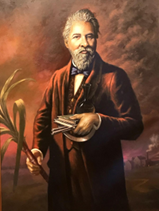
- Born in 1806 in New Orleans to a white father and a free black mother.
- Educated at École Centrale Paris.
- Invented a replacement for "open kettle" sugar refining which employed condensing coils that used the vapor from one vacuum chamber to evaporate the juice from a second chamber.
- Approval for a patent was initially denied (1857) on the erroneous assumption that Rillieux was a slave and therefore not a U.S. citizen.
- Returned to France, teaching at École Centrale Paris, before the Civil War, in part to escape restrictions imposed on free people of color in New Orleans.
Try this: Is evaporation exo- or endothermic? What is the sign of ΔHᵥₐₚ?
Sources
Benfey, Christopher. “Rillieux, Norbert (1806-1894), Inventor, Chemical Engineer, and First Cousin of the Painter Edgar Degas's Mother.” American National Biography Online, 2001, doi:10.1093/anb/9780198606697.article.1301394. Miller, Robin. “Picture of the Portrait of Norbert Rillieux Painted by Ulrick Jean-Pierre.” West Baton Rouge Museum's "Creole Du Monde" Explores the World's Connection to Louisiana's Creole Culture, The Advocate, 2018, www.theadvocate.com/baton_rouge/entertainment_life/arts/article_bfbbf11a-129f-11e8-ab4c-8f145b05bc48.html.
Omowunmi Sadik* 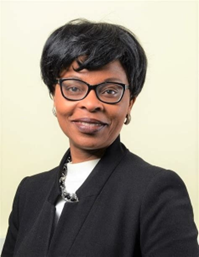
- Born in 1964 in Lagos, Nigeria.
- Masters from University of Lagos (Nigeria), PhD from the University of Wollongong (Australia).
- Teaches at the State University of New York at Binghamton.
- Co-founder and former President of Sustainable Nanotechnology Organization.
- Won Nigerian National Order of Merit Award for Science in 2016.
- Developed biosensors which detect the presence of toxic spores, even at very small concentrations.
Try this: One such sensor uses a monolayer of crystamine: molar mass = 152 g/mol & empirical formula = C₂H₆NS. Find the molecular formula of crystamine.
Sources
Mwilu, Samuel K., et al. “Identification and Quantitation Of Bacillus globigii Using Metal Enhanced Electrochemical Detection and Capillary Biosensor.” Analytical Chemistry, vol. 81, no. 18, 2009, pp. 7561–7570., doi:10.1021/ac900834e. “Omowunmi Sadik.” Wikipedia, Wikimedia Foundation, 26 May 2020, en.wikipedia.org/wiki/Omowunmi_Sadik. “Profile of Omowunmi A. Sadik.” Binghamton University Faculty Profile, http://chemiris.chem.binghamton.edu/SADIK/sadik.htm. Sadik, Omowunmi. “Profile of Omowunmi A. Sadik.” Binghamton University Faculty Profile, chemiris.chem.binghamton.edu/SADIK/sadik.htm.
Yang Wantai 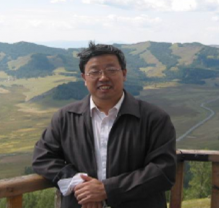
- Masters from Beijing Institute of Chemical Technology (presently known as Beijing University of Chemical Technology) and Ph.D. from the Royal Institute of Technology in Sweden.
- Dean of the School of Materials at Beijing University of Chemical Technology from 2005-2016, where he is still a professor.
- Elected to the Chinese Academy of Sciences in 2017.
- Published more than 290 papers and 15 patents.
- Used UV light to excite molecules and create free radicals in single-walled carbon nanotubes (SWCNTs).
- This simple modification allows the SWCNTs to better disperse in organic solvents while also unbundling.
Sources
Ahmad, Mirza Nadeem, et al. “Photochemical Modification of Single-Walled Carbon Nanotubes Using HPHMP Photoinitiator for Enhanced Organic Solvent Dispersion.” Journal of Materials Science, vol. 45, no. 20, 3 June 2010, pp. 5591–5597., doi:10.1007/s10853-010-4621-2. Boyer, Cyrille. “Author of the Week: Wantai Yang.” Polymer Chemistry Blog, Royal Society of Chemistry, 20 July 20120, blogs.rsc.org/py/2012/07/20/author-of-the-week-wantai-yang/. “Profile Wantai Yang.” Royal Society of Chemistry, https://blogs.rsc.org/py/2012/07/20/author-of-the-week-wantai-yang/.
Tu Youyou* 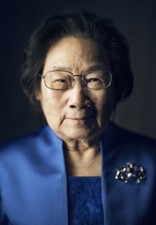
- Born in 1930 in Ningbo, China.
- Contracted tuberculosis at 16, which motivated her to go into the medical field.
- Graduated from Beijing Medical University School of Pharmacy.
- Found an ancient Chinese herbal remedy – "take one bunch of Qinghao (wormwood), soak in two sheng (~0.4 liters) of water, wring it out to obtain the juice and ingest it in its entirety" – and perfected the extraction process to produce pure artemisinin crystals at a high yield.
- Pure artemisinin is a very cheap anti-malarial drug that has saved millions of lives.
- Took the new extracts herself for the safety evaluation in order to begin the clinical trial during peak malaria season, rather than waiting another year.
- Won the Nobel Prize in 2015 for this work, making her the first Chinese woman to do so.
Try this: If Qinghao is 0.45% artemisinin by mass, what concentration would result from the ancient recipe if 100 grams of wormwood was used? Assume complete extraction. Given: artemisinin is C₁₅H₂₂O₅.
Sources
Dambeck, Susanne. “The Modest Nobel Laureate: Youyou Tu.” The Lindau Nobel Laureate Meetings, 12 Dec. 2015, www.lindau-nobel.org/the-modest-nobel-laureate-youyou-tu/. Ratner, Paul. “The 10 Greatest Living Scientists in the World Today.” Big Think, Charles Koch Foundation, 26 Nov. 2017, bigthink.com/paul-ratner/top-ten-greatest-scientists-alive-today. Ro DK, Paradise EM, Ouellet M, Fisher KJ, Newman KL, Ndungu JM, et al. (April 2006). "Production of the antimalarial drug precursor artemisinic acid in engineered yeast". Nature. 440 (7086): 940–3. Bibcode:2006Natur.440..940R. doi:10.1038/nature04640. PMID 16612385 The Handbook of Prescriptions for Emergency Treatments by Ge Hong (283–343 CE). “Tu Youyou Biographical.” NobelPrize.org, Nobel Foundation, 2016, www.nobelprize.org/prizes/medicine/2015/tu/biographical/.
Ahmed Zewail* 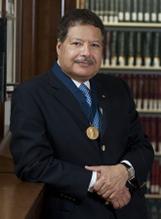
- Born in Damanhur, Egypt.
- Masters from Alexandria University, PhD from the University of Pennsylvania.
- Won Nobel Prize in Chemistry for his characterization of transition states using femtosecond spectroscopy.
- Egyptian-American Chemist; developed "the world's smallest camera."
- Used lasers in order to capture quick reactions so that those reactions could be studied.
Try this: the energy required to go from reactants to a transition state is most likely to be the:
- enthalpy of reaction
- activation energy
- energy of bond formation
- change in temperature
Sources
“Ahmed Zewail.” Wikipedia, https://en.wikipedia.org/wiki/Ahmed_Zewail
Ahmed Zewail – Facts. NobelPrize.org. Nobel Media AB 2021. Tue. 8 Jun 2021.
Undergraduate Researchers: Elizabeth Gorton, Harold Gee III
Advisor: Professor H. Fynewever
Funding: National Science Foundation #1833847.
Take the next step:

ACADEMIC OPTIONS
With over 100 majors and programs, you’re bound to find something you love.
Browse by category
- Arts
- Business
- Communication & Media Studies
- Education
Undergraduate education
- Early Childhood
- Elementary Grade Bands
- Art: Pre-K to 12th Grade
- French: Pre-K to 12th Grade
- Health & PE: Pre-K to 12th Grade
- Spanish: Pre-K to 12th Grade
- Special Education
- TESOL: Pre-K to 12th Grade
- Secondary Education
- English: 5th to 9th Grade
- Math: 5th to 9th Grade
- Science: 5th to 9th Grade
- Social Studies: 5th to 9th Grade
- English: 7th to 12th Grade
- Math: 7th to 12th Grade
- Science: 7th to 12th Grade
- Social Studies: 7th to 12th Grade
- Health Sciences
- Exercise Science
- Kinesiology (Pre-professional Emphasis)
- Nursing
- One Health
- Pre-Dentistry
- Pre-Medicine
- Pre-Occupational Therapy
- Pre-Optometry
- Pre-Pharmacy
- Pre-Physical Therapy
- Pre-Physician Assistant
- Pre-Podiatry
- Pre-Veterinary
- Public Health
- Recreation Leadership
- Speech Pathology and Audiology (BA, MA)
- Master of Speech Pathology
- Theraputic Recreation
- Humanities
- Ministry
- Science, Technology, Engineering & Mathematics
- Social Sciences
- World Languages & Cultural Studies

Apply to Calvin
It all starts here! We accept applications on a rolling basis throughout the year. All completed applications receive equal consideration.
Start your journey
Visit Calvin
Find the visit option that works best for you and get a taste for life at Calvin!
Browse Visit Options Launch the virtual tour
Request Info
Learn why Calvin’s dedication to faith and discovery have earned it the rank of #3 among regional Midwest universities.

Costs & Financial Aid
Families from all economic backgrounds—many just like yours—are making Calvin work. Scholarships, grants and loans are the tools that make Calvin possible.
Explore financial aid & Scholarships How much does Calvin cost?